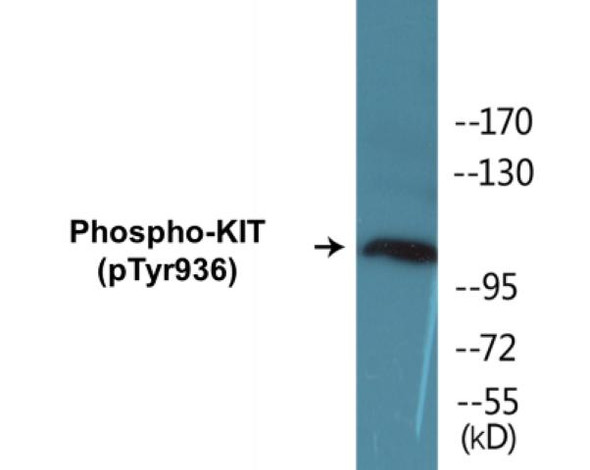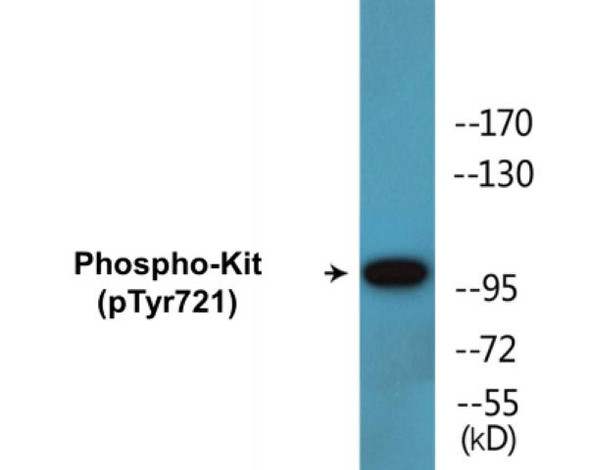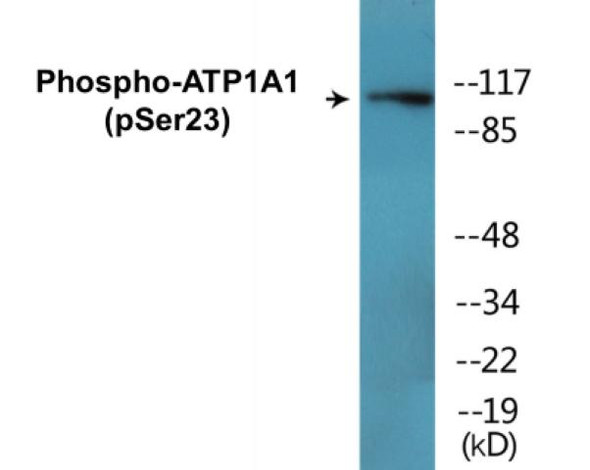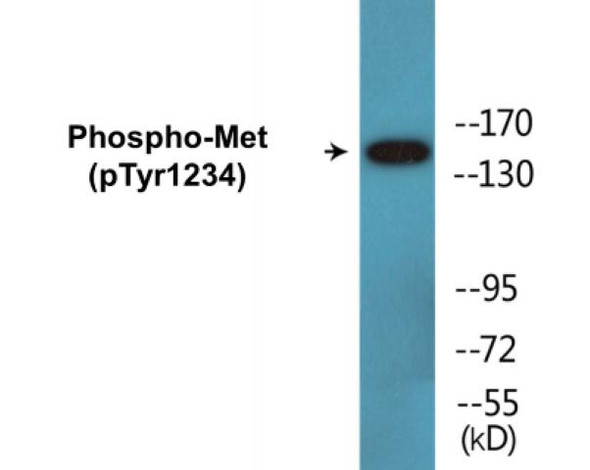TNNI3 (Phospho-Thr142) Colorimetric Cell-Based ELISA Kit
- SKU:
- CBCAB01327
- Product Type:
- ELISA Kit
- ELISA Type:
- Cell Based Phospho Specific
- Reactivity:
- Human
- Mouse
- Rat
- Detection Method:
- Colorimetric
Description
TNNI3 (Phospho-Thr142)Colorimetric Cell-Based ELISA Kit
The TNNT2 (Troponin T Type 2) Phospho-Thr142 Colorimetric Cell-Based ELISA Kit is a cutting-edge tool for researchers interested in studying the phosphorylation of Troponin T Type 2 at threonine 142 in a cell-based assay format. This kit offers high sensitivity and specificity, allowing for accurate and reproducible results in a variety of experimental settings.Troponin T Type 2 is a key regulatory protein in cardiac muscle function, and its phosphorylation at threonine 142 has been linked to various cardiovascular diseases and conditions.
By measuring the levels of phosphorylated Troponin T Type 2, researchers can gain valuable insights into the molecular mechanisms underlying these diseases and potentially identify new therapeutic targets.With its ease of use and robust performance, the TNNT2 Phospho-Thr142 Colorimetric Cell-Based ELISA Kit is an essential tool for researchers studying cardiac biology, cardiovascular diseases, and related fields.
| Product Name: | TNNI3 (Phospho-Thr142) Colorimetric Cell-Based ELISA |
| Product Code: | CBCAB01327 |
| ELISA Type: | Cell-Based |
| Target: | TNNI3 (Phospho-Thr142) |
| Reactivity: | Human, Mouse, Rat |
| Dynamic Range: | > 5000 Cells |
| Detection Method: | Colorimetric 450 nm |
| Format: | 2 x 96-Well Microplates |
The TNNI3 (Phospho-Thr142) Colorimetric Cell-Based ELISA Kit is a convenient, lysate-free, high throughput and sensitive assay kit that can detect TNNI3 protein phosphorylation and expression profile in cells. The kit can be used for measuring the relative amounts of phosphorylated TNNI3 in cultured cells as well as screening for the effects that various treatments, inhibitors (ie. siRNA or chemicals), or activators have on TNNI3 phosphorylation.
Qualitative determination of TNNI3 (Phospho-Thr142) concentration is achieved by an indirect ELISA format. In essence, TNNI3 (Phospho-Thr142) is captured by TNNI3 (Phospho-Thr142)-specific primary (1ø) antibodies while the HRP-conjugated secondary (2ø) antibodies bind the Fc region of the 1ø antibody. Through this binding, the HRP enzyme conjugated to the 2ø antibody can catalyze a colorimetric reaction upon substrate addition. Due to the qualitative nature of the Cell-Based ELISA, multiple normalization methods are needed:
| 1. | A monoclonal antibody specific for human GAPDH is included to serve as an internal positive control in normalizing the target absorbance values. |
| 2. | Following the colorimetric measurement of HRP activity via substrate addition, the Crystal Violet whole-cell staining method may be used to determine cell density. After staining, the results can be analysed by normalizing the absorbance values to cell amounts, by which the plating difference can be adjusted. |
| Database Information: | Gene ID: 7137, UniProt ID: P19429, OMIM: 115210/191044/611880, Unigene: Hs.709179 |
| Gene Symbol: | TNNI3 |
| Sub Type: | Phospho |
| UniProt Protein Function: | TNNI3: Troponin I is the inhibitory subunit of troponin, the thin filament regulatory complex which confers calcium-sensitivity to striated muscle actomyosin ATPase activity. Binds to actin and tropomyosin. Interacts with TRIM63. Interacts with STK4/MST1. Belongs to the troponin I family. |
| UniProt Protein Details: | Protein type:Actin-binding; Motility/polarity/chemotaxis; Motor Chromosomal Location of Human Ortholog: 19q13.4 Cellular Component: cytosol; sarcomere; troponin complex Molecular Function:actin binding; calcium channel inhibitor activity; calcium-dependent protein binding; metal ion binding; protein binding; protein domain specific binding; protein kinase binding; troponin C binding; troponin T binding Biological Process: cardiac muscle contraction; cellular calcium ion homeostasis; heart contraction; heart development; muscle filament sliding; negative regulation of ATPase activity; regulation of smooth muscle contraction; regulation of systemic arterial blood pressure by ischemic conditions; skeletal muscle contraction; vasculogenesis; ventricular cardiac muscle morphogenesis Disease: Cardiomyopathy, Dilated, 1ff; Cardiomyopathy, Dilated, 2a; Cardiomyopathy, Familial Hypertrophic, 7; Cardiomyopathy, Familial Restrictive, 1 |
| NCBI Summary: | Troponin I (TnI), along with troponin T (TnT) and troponin C (TnC), is one of 3 subunits that form the troponin complex of the thin filaments of striated muscle. TnI is the inhibitory subunit; blocking actin-myosin interactions and thereby mediating striated muscle relaxation. The TnI subfamily contains three genes: TnI-skeletal-fast-twitch, TnI-skeletal-slow-twitch, and TnI-cardiac. This gene encodes the TnI-cardiac protein and is exclusively expressed in cardiac muscle tissues. Mutations in this gene cause familial hypertrophic cardiomyopathy type 7 (CMH7) and familial restrictive cardiomyopathy (RCM). [provided by RefSeq, Jul 2008] |
| UniProt Code: | P19429 |
| NCBI GenInfo Identifier: | 136213 |
| NCBI Gene ID: | 7137 |
| NCBI Accession: | P19429.3 |
| UniProt Secondary Accession: | P19429,P48787, P23693, |
| UniProt Related Accession: | P19429 |
| Molecular Weight: | 24,008 Da |
| NCBI Full Name: | Troponin I, cardiac muscle |
| NCBI Synonym Full Names: | troponin I3, cardiac type |
| NCBI Official Symbol: | TNNI3 |
| NCBI Official Synonym Symbols: | CMH7; RCM1; cTnI; CMD2A; TNNC1; CMD1FF |
| NCBI Protein Information: | troponin I, cardiac muscle |
| UniProt Protein Name: | Troponin I, cardiac muscle |
| UniProt Synonym Protein Names: | Cardiac troponin I |
| Protein Family: | Troponin |
| UniProt Gene Name: | TNNI3 |
| UniProt Entry Name: | TNNI3_HUMAN |
| Component | Quantity |
| 96-Well Cell Culture Clear-Bottom Microplate | 2 plates |
| 10X TBS | 24 mL |
| Quenching Buffer | 24 mL |
| Blocking Buffer | 50 mL |
| 15X Wash Buffer | 50 mL |
| Primary Antibody Diluent | 12 mL |
| 100x Anti-Phospho Target Antibody | 60 µL |
| 100x Anti-Target Antibody | 60 µL |
| Anti-GAPDH Antibody | 60 µL |
| HRP-Conjugated Anti-Rabbit IgG Antibody | 12 mL |
| HRP-Conjugated Anti-Mouse IgG Antibody | 12 mL |
| SDS Solution | 12 mL |
| Stop Solution | 24 mL |
| Ready-to-Use Substrate | 12 mL |
| Crystal Violet Solution | 12 mL |
| Adhesive Plate Seals | 2 seals |
The following materials and/or equipment are NOT provided in this kit but are necessary to successfully conduct the experiment:
- Microplate reader able to measure absorbance at 450 nm and/or 595 nm for Crystal Violet Cell Staining (Optional)
- Micropipettes with capability of measuring volumes ranging from 1 µL to 1 ml
- 37% formaldehyde (Sigma Cat# F-8775) or formaldehyde from other sources
- Squirt bottle, manifold dispenser, multichannel pipette reservoir or automated microplate washer
- Graph paper or computer software capable of generating or displaying logarithmic functions
- Absorbent papers or vacuum aspirator
- Test tubes or microfuge tubes capable of storing ≥1 ml
- Poly-L-Lysine (Sigma Cat# P4832 for suspension cells)
- Orbital shaker (optional)
- Deionized or sterile water
*Note: Protocols are specific to each batch/lot. For the correct instructions please follow the protocol included in your kit.
| Step | Procedure |
| 1. | Seed 200 µL of 20,000 adherent cells in culture medium in each well of a 96-well plate. The plates included in the kit are sterile and treated for cell culture. For suspension cells and loosely attached cells, coat the plates with 100 µL of 10 µg/ml Poly-L-Lysine (not included) to each well of a 96-well plate for 30 minutes at 37 °C prior to adding cells. |
| 2. | Incubate the cells for overnight at 37 °C, 5% CO2. |
| 3. | Treat the cells as desired. |
| 4. | Remove the cell culture medium and rinse with 200 µL of 1x TBS, twice. |
| 5. | Fix the cells by incubating with 100 µL of Fixing Solution for 20 minutes at room temperature. The 4% formaldehyde is used for adherent cells and 8% formaldehyde is used for suspension cells and loosely attached cells. |
| 6. | Remove the Fixing Solution and wash the plate 3 times with 200 µL 1x Wash Buffer for five minutes each time with gentle shaking on the orbital shaker. The plate can be stored at 4 °C for a week. |
| 7. | Add 100 µL of Quenching Buffer and incubate for 20 minutes at room temperature. |
| 8. | Wash the plate 3 times with 1x Wash Buffer for 5 minutes each time. |
| 9. | Add 200 µL of Blocking Buffer and incubate for 1 hour at room temperature. |
| 10. | Wash 3 times with 200 µL of 1x Wash Buffer for 5 minutes each time. |
| 11. | Add 50 µL of 1x primary antibodies Anti-TNNI3 (Phospho-Thr142) Antibody, Anti-TNNI3 Antibody and/or Anti-GAPDH Antibody) to the corresponding wells, cover with Parafilm and incubate for 16 hours (overnight) at 4 °C. If the target expression is known to be high, incubate for 2 hours at room temperature. |
| 12. | Wash 3 times with 200 µL of 1x Wash Buffer for 5 minutes each time. |
| 13. | Add 50 µL of 1x secondary antibodies (HRP-Conjugated AntiRabbit IgG Antibody or HRP-Conjugated Anti-Mouse IgG Antibody) to corresponding wells and incubate for 1.5 hours at room temperature. |
| 14. | Wash 3 times with 200 µL of 1x Wash Buffer for 5 minutes each time. |
| 15. | Add 50 µL of Ready-to-Use Substrate to each well and incubate for 30 minutes at room temperature in the dark. |
| 16. | Add 50 µL of Stop Solution to each well and read OD at 450 nm immediately using the microplate reader. |
(Additional Crystal Violet staining may be performed if desired – details of this may be found in the kit technical manual.)










